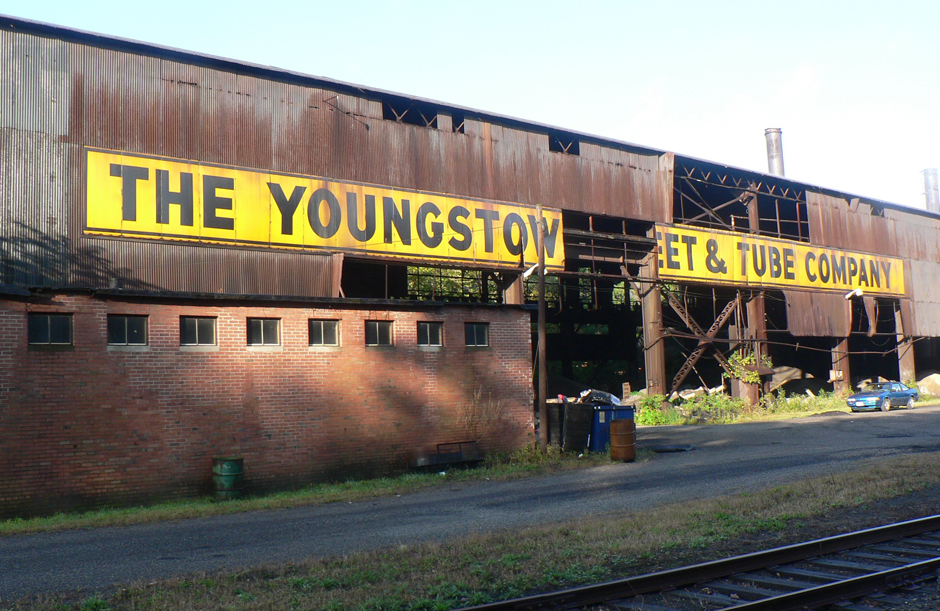
WASHINGTON—As far as Tim Ryan is concerned, Democrats are still leaving blue-collar workers behind.
Ryan, the fiery Democratic congressman from Youngstown, Ohio, took that theme – which he pounded home just over a year ago among his colleagues – to the International Association of Fire Fighters (IAFF) legislative conference in D.C. The majority of the members of that national union are actually registered Republicans.
Ryan does have a point: Voters he talks about have been hit hard by plant closures, outsourcing, stagnant wages and a host of other problems. With many not knowing which way to go or how to deal with their dilemma, post-election polling in the key Great Lakes swing states of Ohio, Michigan, Pennsylvania and Wisconsin showed voters who were unionists or in union households split 50-50 in the 2016 presidential election between Democratic nominee Hillary Clinton and GOPer Donald Trump. Despite union endorsements and union campaigning for Clinton many union members aimed the fire resulting from their frustration more at the Democrats than they did at the GOP and some of the other real causes of their problems.
As a result, Trump narrowly won those states – and a majority of the electoral vote — and congressional Democrats did not retake the Senate and lost U.S. House seats. In some of the key states involved, a contributing factor to the Clinton loss was the third party candidacy of Jill Stein who ran on the Green Party ticket. That siphoned off votes from Clinton, giving Trump the margin he needed for an electoral college plurality in those states.
Nevertheless, perhaps because of the Democratic Party’s pro-worker platform, Clinton narrowly won Ryan’s home county, Mahoning, 49 percent-46 percent. She lost the rest of his congressional district by double-digit percentages. Ryan told the Firefighters the reason for that result is that Democrats have left their “gut issues” and their base behind.
Ryan, 44, had sounded those same themes after defeated and dejected Democrats made their way back to Capitol Hill after the November 2016 rout. He challenged Democratic leader Nancy Pelosi, D-Calif., for her job, arguing she and party leaders had lost touch with the blue-collar voters, just as he claimed Clinton had.
Pelosi, who will turn 78 in late March, beat back his challenge easily, 134-63, but the vote Ryan got was the highest vote against a congressional party leader in decades.
Ryan has continued to pound home his “blue-collar” message ever since, and he did so at the IAFF.
While he makes some good points noting the devastating effects of global capitalism on workers in the industrial heartland, he does not adequately address other causes of Trump’s success and Clinton’s defeat, including success by the right wing in appealing to racism, sexism and anti-immigrant feelings As long as workers allow themselves to be sidetracked by these issues, the right wing has a head start even before electoral campaigns get into the nitty-gritty of the issues.
“We need to talk more about jobs and wages,” he told the 1,000-person crowd. “Defending the people who take a shower after work needs to be the main agenda of the Democratic Party.”
Abandoning the blue-collar workers is not a recent development, he said. In Youngstown alone, it goes back 41 years, to “Black Monday” in September 1977, when the city’s main employer, Youngstown Sheet and Tube closed. “We’re still feeling the effects,” he commented.
They include declining population, few well-paying job prospects, shuttered factories, vacant store-fronts, a shrinking tax base and workers “who were making 40 bucks an hour and are now making 15.”
And that’s all over the industrial Midwest, he added, “from Youngstown and Dayton to Detroit to Flint.” Residents of all those cities and more in surrounding states, “have been in a Depression since 1977.”
“We’re not speaking to their aspirations. Our politics are stuck,” he added.
So when the voters in those areas saw the depression in their cities and the inaction in D.C. to help them, they turned to Trump, Ryan said. To get them back, Democrats must “focus in Congress” on “the people who work hard, play by the rules, and bust your rear end — whether you’re a teacher, a cop, a firefighter or a steelworker.”
One way to do so, Ryan advocated, is crafting and enacting a massive rebuilding plan for the nation’s heartland.
The 5-year plan would tear down the vacant houses and shuttered factories and replace them with new plants making things such as electric cars, high-speed rail and solar power panels and erecting new and affordable housing for the workers and their families. Ryan did not say how much the plan would cost. Nor did he stress the importance of making sure that the jobs created go to those in the hardest hit communities, including minority communities across the country.
He was strong on the issue of unions, however. “And it would involve giving workers more power, too, by strengthening unions and the right to organize,“ Ryan declared.
“For a long time, we’ve had politicians who don’t even want to speak the word ‘union,’” he said, without naming names and without differentiating them by party. Instead, there are a lot of pols – again not naming names – “who play ‘divide, divide, divide.’”
“But if we’re going to reclaim a middle class, it’ll have to be with a strong, robust and growing union movement.”
John Wojcik contributed to this story.










